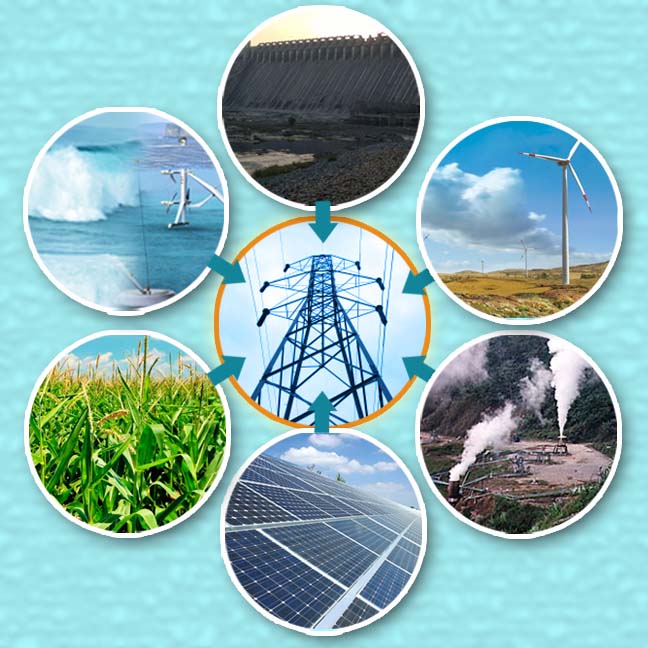26 January 2014, Sweetcrude, Port Harcourt – The Nigerian economy has borne the huge burden of subsidy payments on petroleum products. Massive importation of light petroleum products (petrol, diesel, and kerosene) continues unabated because the national refineries are working sub-optimally and new ones are yet to be constructed. Recently, government announced its plan to privatize the old and mismanaged refineries, which was greeted with relief except for oil industry unions who believe that they will bear the brunt of this exercise unless proper negotiations are made to protect their interest. Towards the end of last year, government made a volte-face about the privatization plan, to the relief of unionists but, to the surprise of industry analysts. Some may ask, why the surprise?
Pragmatic reasoning still suggests that the refineries should be privatized, and there are various models that could be adopted for this. However, I do not think that the preferred model is outright sale of the refineries, because the exercise is very likely to translate from public sector (government) monopoly of refineries to private sector monopoly. A private sector monopoly of refineries without an alternative fuel for our vehicles is absolutely dangerous because 170 million Nigerians are locked into the petrol / diesel ‘captive’ market and will be at the mercy of the Directors of the three refineries. You cannot pack in the garage a jeep you bought with millions of Naira, just because the price of petrol has risen to N300. There are also far more dangerous political and national security implications.
Now, where does this lead us in our search for solutions towards achieving self-sufficiency in availability of petroleum products? Addressing this critical challenge would require increasing capacity for production of petroleum products (supply- side solution) and / or reducing the demand for petroleum products, particularly petrol and diesel (demand- side solution). The supply-side factors, in the case of our indigenous downstream petroleum sector tend to be more critical. The critical supply factors to be considered in the course of deregulation are improvements in the efficiency of domestic supplies; liberalization of product supplies; Brownfield refinery expansion (i.e. expansion of existing refineries); and Greenfield refinery development (i.e. new refineries construction). Loosening up all supply-side constraints can only be achieved when existing refineries are repaired, privatized and expanded; and new refineries constructed (both private and PPP-based refineries); and pipelines privatized.
Conversely, demand-side factors such as products substitution with biofuels, compressed natural gas (CNG), liquefied natural gas (LNG) etc; improvements in the power sector; and the use of more fuel- efficient vehicles are also important but progress in these directions may not keep pace with the urgency required to attain self-sufficiency in supplies. So most industry analysts thought!
Now that government has reversed its policy of refinery privatization, and there is nothing in the horizon to suggest that new mega- refineries are being built or small and medium scale -private refineries are being commissioned, it would seem that introduction of alternative fuels for vehicles (natural gas vehicles, NGVs) is inevitable. The objective should be to integrate fuel substitution with projected refinery supply volumes after the turn-around maintenance of existing refineries have been completed. According to an industry expert and practitioner, Dr Emeka Ene of Energia Oil Company, the introduction of compressed natural gas (CNG) fuels for public transportation and government/company vehicle fleets is a “low hanging fruit” and represents a “quick-win”. It is clear that Dr Ene was right, but first what is this alternative fuel about, how will it impact Nigerians positively, what are the constraints, which countries have developed the use of NGVs, and how should government and private investors go about its introduction?
Alternative fuels have a role to play in the demand mix for petroleum products, especially in public transportation. According to an IEA-OECD study carried out by Michael Nijboer on “The Global Use of Natural Gas- Driven Vehicles (NGVs)”, natural gas has been more competitive when compared to gasoline in regard to transmission and distribution grids, and public transportation. According to the report, there is an opportunity for simultaneous gas market development and boosting of a country’s NGV market share.
CNG is produced by compressing natural gas with gas compressors to less than 1% of its volume, and then stored / distributed in hard steel containers (with cylindrical or spherical shapes) at a pressure of 200-248 bar. The cylinders are then fitted into traditional petrol or diesel-run vehicles that have either been modified or manufactured for CNG use. CNG can also be used in conjunction with another fuel, e.g. diesel or petrol (bi-fuel vehicles). NGVs are becoming popular around the world, in response to high fuel prices and environmental concerns.
BENEFITS
The use of CNG, as a ‘greener fuel’ has numerous benefits. It is more environmentally efficient for motorists and the general public. CNG emits significantly fewer air pollutants (i.e. carbon dioxide, carbon monoxide, nitrogen oxides, sulfur oxides, etc) than petrol/diesel. CNG is lead-free, thereby eliminating fouling of spark plugs. It mixes evenly and easily in air, being a gaseous fuel. CNG is less likely to ignite on hot surfaces because it has a narrow range of flammability (5-15%) and a high auto-ignition temperature (540 degrees centigrade). This is contrary to the safety issues that come to mind when motorists are persuaded to convert to the use of CNG gas cylinders. CNG fuel systems are specially sealed, thus preventing fuel losses from evaporation and spills. CNG vehicles have lower maintenance costs than petrol / diesel-powered vehicles. The pricing of natural gas driven vehicles is significantly lower than comparable petrol/diesel driven vehicles.
Introducing NGVs will help reduce subsidy payments, eventually eliminate fuel subsidies and facilitate the deregulation of the downstream petroleum industry in Nigeria. Its impact on reducing demand for petrol and diesel is immediate and measurable. It will provide a cheaper and cleaner alternative fuel to motorists and remove them from the current ‘captive’ petrol/diesel market into which every motorist is locked-in. It will promote investment in natural gas production, CNG fuel stations, CNG production plants, CNG conversion centers, and CNG conversion kits thereby creating employment for millions of unemployed citizens. It is an established fact that the price of petroleum products affects the prices of all consumer goods and services in the long run. Similarly, the introduction of a cheaper alternative fuel for public transportation and for transportation of consumer goods will lower prices of all goods and services in the long run. Also, alternative fuel transportation infrastructure can be established within a shorter timeframe (9-12 months) compared to even the smallest refinery project.
GLOBAL ADOPTERS OF NGVs
The global NGV fleets as at 2013 was roughly 18 million vehicles, led by IRAN with 3.5 million, PAKISTAN (2.79 million), ARGENTINA (2.28 million), BRAZIL (1.75 million), CHINA (1.58 million), INDIA (1.50 million), ITALY (0.82 million), COLOMBIA (0.46 million), UZBEKISTAN (0.45 million), THAILAND (0.42 million), etc. Among the auto manufacturers of bi-fuel cars are Toyota, Honda, Peugeot, Volkswagen, General Motors, etc.
IRAN has the world’s second largest natural gas reserves as at 2011, after Russia, and is now the world leader in NGVs. It is highly advisable that Nigeria, being one of the top natural gas reserve powers, with a huge population and high unemployment level should follow IRAN’s lead in this respect. The same argument applies to all OPEC countries.
CONSTRAINTS
The cost of CNG fuel storage tanks and its placement in a vehicle are the major constraints to a wider and rapid adoption of CNG as a fuel. This accounts for why the early adopters were usually government ministries and departments, public transportation vehicles, private companies / corporation fleets, etc. The government bodies and companies can quickly amortize their investment in vehicle conversions. However, the experience of countries that have adopted NGVs is that the average cost of CNG storage tanks tends to reduce progressively as more vehicles are converted (i.e. economies of scale).
ROLE OF GOVERNMENT
In all the countries that have developed the use of CNG as alternative fuel, government was the first adopter of the idea. Therefore, the Nigerian Government needs to develop an integrated policy document for CNG- driven vehicles, and also to simplify and accelerate the process for private investors in NGV fuel stations, natural gas gathering and compression centers, and vehicle conversion centers by providing incentives. The Ministry of Petroleum Resources (MPR) and Department of Petroleum Resources (DPR) have lead roles to play here. It is the responsibility of these government agencies to develop government policies, guidelines, and incentives on alternative fuels and fleet purchase. Subsequently, the MPR should rapidly escalate the policy document to the Federal Executive Council (FEC) for adoption and approval. This will deliver unequivocal message to the citizens of this country about government’s responsiveness to their needs. It will also stimulate private sector investment in alternative fuels for public transportation. This should generate huge positive public reaction and fiercely boost the ratings of this administration!
Government incentives would include mandatory purchase of NGVs by government ministries, agencies, and departments at national, state and local government levels. This should also include conversion of existing government vehicle fleets to CNG alternative. Government could design excise concessions or waivers on CNG conversion kits, CNG delivery trucks, and equipment for constructing CNG fuelling stations. Tax credits could be extended to gas gathering and compression companies.
ROLE OF THE PRIVATE SECTOR
On the basis of a clear government policy on NGVs and requisite incentives, the private sector can develop “GREEN HIGHWAYS” driven by dual-fuel technology to interconnect public transportation between major cities. A Green Highway entails establishing alternative fuel refueling stations along specific public transport routes to boost adoption of alternative fuels.
Green highways, funded by the private sector, can initially be established along four routes (as prescribed by Dr Ene) namely, ROUTE 1 (LAGOS – ORE – BENIN – ONITSHA – OWERRI – ABA); ROUTE 2 (WARRI – MBIAMA – PORT HARCOURT – UYO – CALABAR); ROUTE 3 (ENUGU – MAKURDI – ABUJA); ROUTE 4 (ABUJA – KADUNA – JOS – KANO).
Subsequently, these routes can be expanded into other cities as the penetration of NGVs for public transportation gains traction. The MD of TOTALSUPPORT ENERGY, Engr Ubani Nkaginieme, who owns a natural gas compression plant in Port- Harcourt informs me that it is possible to convert 0.5 million vehicles to dual-fuel (i.e. gas and petrol) within 3-9 months, and an additional 1 million vehicles in 4-24 months. He further stated that it is possible to deliver a CNG infrastructure within 6-12 months. So, it means that the deliverables are clear and the timeframe short! We will come up with a joint-position paper on this shortly.
This proposal is without prejudice to the role of government in encouraging other investments in the natural gas value chain, which includes expanding LNG exports and gas-fired power generation, contemplating building gas-to-liquid (GTLs) plants, conversion of natural gas to methanol, petrochemicals, fertilizers, and gas supplies to the usual industrial and domestic users.
*Dr Chijioke Nwaozuzu, a petroleum policy expert, writes from Port Harcourt.
Email: [email protected]. Tel: 070 6874 3617 (SMS only)




